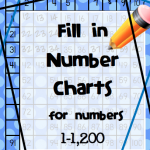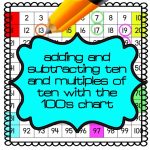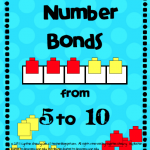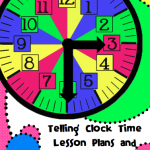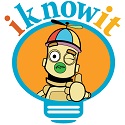Money–I Have Who Has Cards for Free!
I have been sorting through some of the activities I have made from this past year, so I can post some of them on Teachers Pay Teachers–one of my many summer goals :), and I just happened across this game which I made from the descriptions on math wire. I made them into card form, and I also am including a set which I added coins onto for students who need the visual–or you could use both sets for to differentiate! Until I went to the NCTM conference in San Diego, I wasn’t a big fan of the game I Have Who Has because it seemed ineffective to me to play as a whole class. However, at the conference I went to a workshop in which the presenter modeled playing in small groups. In his version groups of four to six students are give a deck of cards. Each child holds several cards, so they have more than one turn and naturally are more attentive to the game since they participate more than one time.
Free Ten Frame Cards
Click here for free TenFrameCards.
I must tell about a favorite phrase that I learned from Melissa Conklin–Math Solutions Presenter while she was modeling ten frame card game. Since young children have difficulty shuffling cards, she says to tell them to shampoo the cards on their desk just like they move their fingers when they shampoo their hair. Too cute!
An Unusual Classroom Reward System
Instead of rewarding students with, classroom bucks, tickets, candy, or the like try using beads. Students earn beads for good behavior which they string in their free time to make a necklace. When students gain enough beads to string on their necklace, they are allowed to take the necklace home. Students may take all year to build their necklace. If you buy a variety of beads at a hobby store in bulk, then you may have some beads which are more sought after than others. For example, a soccer ball, basketball, or football bead may draw your boys’ attention. If you decide to implement this system in your classroom, you will have to have a place for each student to store their beads so that they are not a distraction, and so that they don’t spill easily. I used a small plastic cup (old country crock containers) hot glued to students’ desks. If students play with their beads when they are not supposed to then take some of their beads. This system does take some planning, but elementary students absolutely love it.
An Effective Tool for Motivating Students to Learn Multiplication Facts
Research shows the best way for students to learn math facts is practicing for about 7 minutes daily. With this in mind, we gave a class of students a teacher made sheet of multiplication facts in which none repeated with the commutative property. So if there was a 2×3 fact on the page, this fact didn’t repeat with a 3×2. We timed the students almost daily beginning with five minutes to complete a page of 66 problems 2’s through 12’s facts. Students would count the number they left blank and that they missed and record this on their page. Then their teacher and students would call out all the answers chorally to check. Next their teacher would record the number students missed on a chart. Every week, after students had felt some success, the time was moved down by 30 seconds until the time was equal to 2 seconds per problem (or 2 minutes and 12 seconds). This method proved to be effective for most students because we encouraged them to get just one more right each time. Below is a picture of the chart which shows students times. Each different colored row is when the time changed which you can see listed at the top of each column. The chart shows a time period of about four weeks. Even if students didn’t make it to the goal of answering each problem within two seconds, they made drastic improvements from their beginning test. Ideally more time would have been spent on practicing, however the end of the year was upon us. I was so proud of these kiddos!
How to Effectively Teach Long Division with One Digit Divisors
A struggle for many students when learning long division is their lack of fluency with multiplication facts. To help students adapt to learning the process of long division, allow them to write their multiples using the divisor in the margin of their paper. This is one less mental process students must go through when solving a long division problem. I have seen this strategy prove effective with students who are emerging in their long division. For an example, when students are solving 84 divided by 3, they can write all of the multiples of 3 down the margin of their papers as a cheat sheet of sorts.
If students use the traditional algorithm, they can immediately look down the list and find that 3×2=6 and 3×3 =9. Since the first digit of 84 is 8, students can look at their list and find that 3×2=6 yields the largest number that will fit into 8 and that 3×3=9 is too large. When subtracting the 6 tens from 84, the difference is 24. Students can look down the multiples list again to see that 3×8 =24 to find the ones place of the divisor. This method of teaching division can be found in Marilyn Burns’ book Extending Division.
Staples Teacher Appreciation Day with Freebies
Staples always has excellent back to school deals for teachers in which they offer free goody bags. This year 2011 will be no different. If you are an early riser, be one of the first 100 teachers to arrive at Staples for a gift bag. There will also be special coupon savings that day. At my store, the Teacher Appreciation Day is Saturday morning August 6th. However, this day may be different in your location. Simply click here to find out what time the Staples Teacher Appreciation Day will be in your area.
Teaching Perception Rather Than Memorization
In Santa Monica, CA at New Roads School, students are testing out a new online program which teaches them to make quick decisions based on their perceptions rather than on the traditional methods of memorization. Students are taught to skim problems for a few key words and then make a decision about the correct answer for a problem. In this way students are able to find patterns and improve their abilities to answer problems. To read more click here.
Where Can You Find Amazing Word Walls?
I just heard some colleagues discussing word walls that come pre-printed with pictures to go with the words. They have math, science, and literacy word walls–all with pictures. I didn’t know how good they were until I clicked the link for myself…and wow! They are fabulous! Just take a look at the pictures. I am attaching a link to the picture so if you are interested in viewing more or purchasing them, just click the picture.
Need Supplies But Don’t Have the Money
Did you run out of pencils? Do you need a piano for your music class? A website–donorschoose.org of which you may have not heard is granting wishes to worthy public school classrooms across the U.S.who are lacking in supplies. Teachers do not have to write grants! All teachers have to do is request the materials needed, send thank you notes, and photographs of the project taking place. Ordinary citizens can donate as little or as much as they want. This website allows many people to donate to one need until that need is filled. Visit the site to see some of the amazing projects that have been fulfilled.

